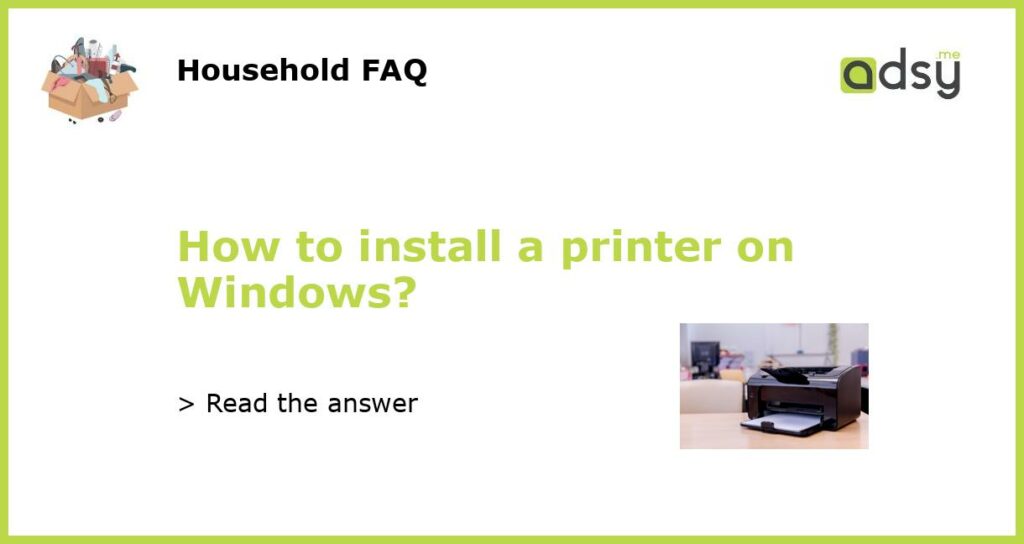Check Compatibility and Gather Materials
Before you begin installing a printer on Windows, it is important to check if the printer you have is compatible with your operating system. You can usually find this information on the manufacturer’s website or in the printer’s user manual. Additionally, make sure you have all the necessary materials for the installation, such as a USB cable or Wi-Fi network details.
Connect the Printer
The next step is to physically connect the printer to your computer. If you have a USB printer, simply plug one end of the USB cable into the printer and the other end into an available USB port on your computer. In case you have a wireless printer, follow the manufacturer’s instructions to connect it to your Wi-Fi network. This usually involves accessing the printer’s settings menu, selecting your network, and entering your network password.
Download and Install Printer Drivers
Printer drivers are software programs that allow your operating system to communicate with the printer. In most cases, Windows will automatically detect and install the necessary drivers for your printer. However, if this doesn’t happen or if you want to use specific features of your printer, you may need to manually download and install the drivers.
To do this, visit the manufacturer’s website and navigate to the support or drivers section. Look for the drivers compatible with your printer model and Windows version. Download the correct driver files, usually in the form of an installer or a compressed folder. Once the download is complete, double-click on the file and follow the on-screen instructions to install the drivers.
Set the Printer as Default
After the drivers are installed, you need to set your printer as the default printer on your Windows system. This ensures that whenever you print a document, it will be sent to the correct printer automatically.
To set your printer as the default, go to the Control Panel on your computer. You can access the Control Panel by clicking on the Start menu and typing “Control Panel” in the search box. Once you’re in the Control Panel, click on “Devices and Printers” or “Printers and Scanners.” Right-click on your printer and select “Set as default printer.”
Test Print
Finally, it’s time to test your newly installed printer. Open a document or image that you want to print and select the Print option. This can usually be done by clicking on File > Print or using the keyboard shortcut Ctrl + P. Make sure your printer is selected as the default printer and click on the “Print” button.
If the printer successfully prints the document, congratulations! You have successfully installed and set up your printer on Windows. If the printer doesn’t print or encounters any issues, double-check the connections, printer drivers, and printer settings. You can also refer to the printer’s user manual or contact the manufacturer’s support for further assistance.






